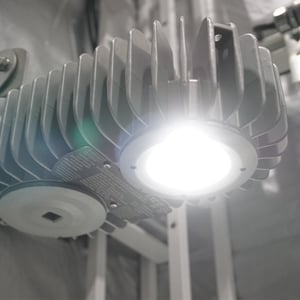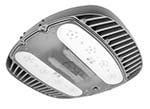What does it take to design and build an explosion proof light for hazardous location use?
CID1 or CID2?
Explosion proof lighting can refer to systems that are suitable for Class I Division 1 or Class I Division 2 use. While the ability to contain a possible explosion within the housing and releasing cooled gases is key for CID1 systems, the requirements are different for CID2.
Class I Division 1 Lights
 CID1 fixtures must contain explosions and prevent them from spreading. This classification is with the use of a heavy-duty enclosure design as well as suitable flame paths. The flame path cools down hot gases before they are released into the environment. Cooling down the explosive gases with the help of the flame path allows for a compliant design. Reducing the potential for explosions to propagate throughout the facility. It is ideal for areas where vapors, gases, heat, or other flammable materials are always present. Minimizing the risk in case of accidents.
CID1 fixtures must contain explosions and prevent them from spreading. This classification is with the use of a heavy-duty enclosure design as well as suitable flame paths. The flame path cools down hot gases before they are released into the environment. Cooling down the explosive gases with the help of the flame path allows for a compliant design. Reducing the potential for explosions to propagate throughout the facility. It is ideal for areas where vapors, gases, heat, or other flammable materials are always present. Minimizing the risk in case of accidents.
Construction of Explosion Proof Lights
Construction of explosion proof lighting can include durable housing with glass lenses. These are very durable and won't break in an internal explosion. Some fixture designs also incorporate advanced thermal control mechanisms to dissipate heat. Yet, this is less of an issue with LED fixtures since they are much more energy efficient. Additionally, many fixtures feature copper-free aluminum housing to enhance heat dissipation. Reducing the risk of ignition due to hot surface temperatures.
Explosion Proof Fixture Casing
Explosion proof fixtures can also incorporate advanced sealing methods, achieving high IP levels. This feature includes tight clearances to prevent the entry of contaminants in gas, liquid, or solid form. Although seals may not always remain airtight, the integrity of the fixture remains. They are also given special consideration to mating surfaces.
In contrast, CID2 designs use electronics that are not likely to cause an arc or spark.
Design Elements for Class I Division 2 Lights
These lights must use heavy-duty industrial enclosures, specific lens materials, gaskets, and electronics. Yet, they do not need flame paths. It is important to note that explosion proof lighting is distinct from shatter-resistant fixtures. Impact or vibration-resistant lights are not suitable for hazardous location use. Furthermore, explosion proof fixtures are for areas with dangerous gases and flammable materials. The risk of explosions is a genuine concern under normal operational conditions.


